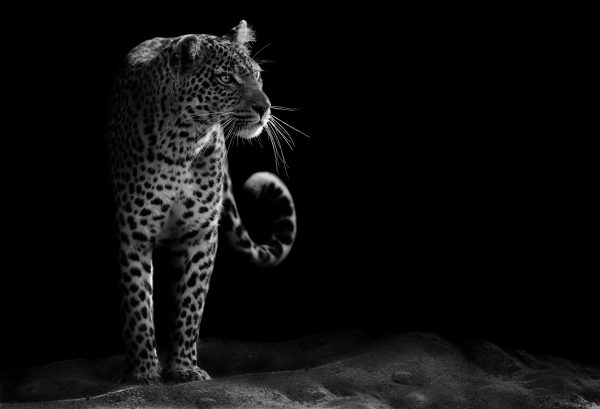
Indian Community Coexists with Leopards
An Indian community is living with leopards. In this northwestern Indian village, you have a 90 percent chance of seeing a leopard. As amazing as this sounds, it is the truth. This is not a wildlife reserve and it is an area full of villagers and livestock. This combination usually brings human-big cat conflicts, but the people of Bera have learned how to live with leopards. As devotees of Shiva, (the god of wild things, who’s clad in a leopard skin) the people know that the day belongs to them, but the night belongs to the leopards.
This region is just under eight square miles in the Aravalli hills between Udaipur and Jodhpur has the largest population of leopards on earth. There are an estimated fifty leopards living in the rocky outcrops alongside irrigated fields and thorny desert scrub.
unique relationship with followers of Shiva
The unique relationship with the Rabari villagers could be the reason for the leopards’ presence. The Rabari, a tribal caste of semi-nomadic cattle herders and shepherds that migrated to Rajasthan from Iran via Afghanistan a thousand years ago, are devout Hindus. In fact, they are followers of Shiva, the god of wild things, who is clad in a leopard skin.

An estimated 14,000 leopards call India home. This is an increase in population from the low of 7,000 in the 1960s. The Hindu tenet of non-violence, requires the big cats, like all wildlife in India, to be protected by law. From 1995-2017 , the nonprofit Wildlife Protection Society of India’s data shows 4,373 leopards were killed by poaching or by farmers out of fear or retaliation for attacks on livestock.
But in Bera, when leopards leap into a livestock pen and drag off a calf, goat or sheep, the villagers claim the small recompense, less than half the market price, from the State Forestry Department. Some don’t file a claim but consider the kill an offering to the god.
The Day Belongs to Humans, but Nights Belong to the Leopard
Likewise, the leopards around Bera seem not to feel threatened by humans. Nearly 100 people are killed and close to 1000 are injured by leopards annually in other areas of India by leopards. Yet, even living with leopards in the high concentration in Bera, there have been no attacks on people in over a century.
The leopards seem indifferent to the still low-key tourism in the area. While tourists and villagers carrying offerings climb the steps to a small temple, leopards can be seen casually lying at the mouth of nearby cave. Leopards are solitary cats. But around Bera as many as 5 adult leopards can be seen together.

Vehicles come and go during the day, but as the sun begins to set, the locals and tourist retreat to a self-imposed curfew. The Rabari have a saying, “The day belongs to humans, but nights belong to the leopard.”
Campaign to have bera designated a community reserve
The Rabari villages are campaigning to have Bera designated a community reserve. This would ensure regulation and income remains in the hands of villagers. The current level of tourism is sustainable. But, if they are not able to get community reserve status, they will be overrun. Many fear commercial big tourism marginalizing the local people.
Shatrunjay Pratap, a wine-maker -turned conservationist and wildlife cameraman, expresses the wishes of the Rabari, “When we are demonstrating how well we can do as guardians of the leopards, why can’t we keep this place in the hands of the community, as an example to the world about living with leopards.”
Let’s send positive thoughts that the Rabari will get their community reserve status to keep living with leopards. For the good of the villages and the leopards.
Thank you for reading and for caring about all cats big and small.